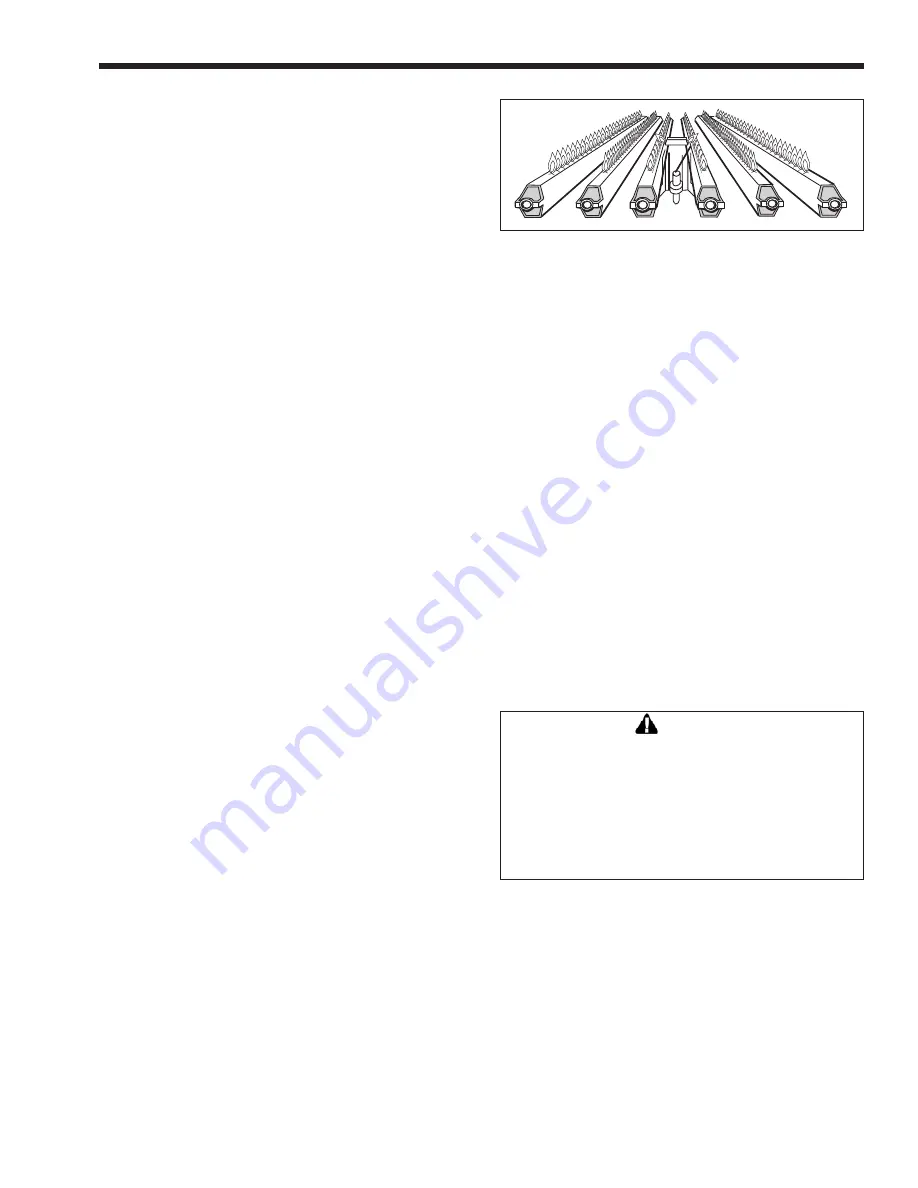
Page 15
b.
Drinking of alcoholic beverages
before or during spa or hot tub use can
cause drowsiness which could lead to
unconsciousness and subsequently result in
drowning.
c.
Pregnant women beware! Soaking in water
above 102°F (39°C) can cause fetal damage
during the first three months of pregnancy
(resulting in the birth of a brain-damaged or
deformed child). Pregnant women should
stick to the 100°F (38°C) maximum rule.
d.
Before entering the spa or hot tub, users
should check the water temperature with
an accurate thermometer; spa or hot tub
thermostats may err in regulating water
temperatures by as much as four degrees
Fahrenheit (2.2°C).
e.
Persons with a medical history of heart
disease, circulatory problems, diabetes or
blood pressure problems should obtain their
physician's advice before using spas or hot
tubs.
f.
Persons taking medications which
induce drowsiness, such as tranquilizers,
antihistamines or anticoagulants, should not
use spas or hot tubs.
SECTION 4.
Maintenance
1. Inspect the pump seal every 6 months. Replace the
pump if the seal shows signs of leakage or wear.
2. At start-up and every six (6) months thereafter, the
pilot and main burner flame should be observed
for proper performance (see Figure 16). See
attached lighting and shut-down instructions
for proper pilot flame pattern. If flame has the
appearance of "sooting" tips, check for debris near
orifices and call a qualified service technician.
3. Inspect the venting system for obstruction, leakage
and corrosion at least once each year.
4. Keep heater area clear and free from combustible
material, gasoline and other flammable vapors and
liquids (see Table 1 for minimum clearances).
5. Be certain all combustion air and ventilation
openings in the room are unobstructed.
6. Check for fouling on the external surfaces of
the heat exchanger every six months. (
NOTE:
after installation and first start-up, check the heat
exchanger for fouling after the following periods
of operation: 24 hours, 7 days, 30 days, 90 days
and once every six months thereafter.)
Fouling on the external surfaces of the heat
exchanger is caused by incomplete combustion
and is a sign of combustion air and/or venting
problems. As soon as any fouling is observed,
Figure 16. Main Burner Flame Pattern.
the cause of the fouling should be corrected (see
Section 5, Troubleshooting Guide). The heat
exchanger can be checked with a flashlight by
locating a mirror under the burners. An alternate
method is to remove the venting and top panels
as necessary to inspect the heat exchanger from
above. Also check the vent system for defects
at this time. (If cleaning is required, shut off all
electrical and gas supply to the heater.)
7. To expose the heat exchanger:
Indoor Models:
Remove the flue pipe, top of unit,
rear upper jacket, flue collector rear panel and heat
exchanger baffles.
Outdoor Models:
Remove vent top assembly,
rear upper jacket, flue collector rear panel and heat
exchanger baffles.
8. To remove all burners:
It is usually more convenient to remove the burner
tray assembly. Disconnect sensor wire, ignition
cable (or thermocouple generator) and pilot gas
line. Disconnect manifold inlet union(s). Remove
the four (4) retaining screws. Grasp the manifold
pipe and slide out the burner tray.
Caution
Black carbon or green soot on a dirty heat
exchanger can, under certain conditions, be
ignited by a random spark or open flame. To
prevent this unlikely occurrence, dampen the
soot deposits with wet brush or fine water
spray before servicing or cleaning the heat
exchanger.
9. Clean heat exchanger using a wire brush to
remove soot and loose scale from the unit. Clean
fallen debris from bottom of heater. Make sure
burner ports are clear and pilot assembly is free of
debris.
10. Reassemble in reverse order and be sure the heat
exchanger baffles are replaced.
11. The gas and electric controls installed on the
heater are engineered for both dependable
operation and long life, but the proper
functioning of these components is necessary
for safe operation of the heater. It is strongly
recommended that the basic items be checked by
a competent serviceman every year and replaced
MightyTherm Pool Heater














































